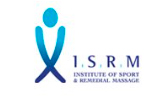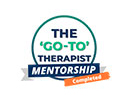If you find yourself constantly bumping into furniture, dropping things, or just feeling really clumsy and ungrounded, you’re not alone. This is not just a sign of being distracted; it’s often a sign that your brain and body aren’t communicating effectively. This feeling of being slightly “out of sync”-of literally tripping over air-can make everyday life frustrating and even stressful.
At Acubody, we realise that true coordination is not just a matter of muscle strength or mental focus but rather one of sensation and awareness. We use an integrated approach to help numerous clients who experience chronic pain or anxiety realise that their symptoms can be due to a lack of embodiment. People with hyper-mobility syndromes also commonly experience reduced proprioception (knowing where your body is in space) and suffer repeated injuries as a result. This is why we offer our special movement and mind-body training in the highly effective method of somatic coaching.
This article will explain why you might feel clumsy and how enrolling in a somatic therapy course can fundamentally improve your sense of balance, coordination, and confidence.
Why Do I Feel Clumsy or Uncoordinated? The Disconnection Factor
When we talk about feeling clumsy, we are usually talking about a breakdown in proprioception. Proprioception is an internal sense that tells the body where its limbs are in space without having to look. It’s the sense that lets you walk in the dark, catch a ball without thinking, or stand on one leg.
Contemporary life disrupts this sense in two main ways:
- Chronic Stress and “Fight or Flight”: When the nervous system is in a state of high alert, as it tends to be from stress, work pressure, financial worries, or city noise, the body’s energies are diverted away from the subtle senses, such as proprioception, to meet the survival needs. This can leave one feeling disconnected, hurried, and prone to misjudging distances or steps.
- Habitual Tension and “Numbness”: Years of sitting, repetitive work, or guarding against old injuries create areas of chronic muscle tension. When a muscle is constantly tense, it becomes less capable of sensing subtle movements. This lack of sensory feedback means your brain gets incomplete data, leading to jerky, inefficient, or uncoordinated movements. Your brain simply doesn’t know where the ground is.
These factors create a cycle: the more disconnected you feel, the more likely you are to trip; the more you trip, the more anxious you become, further heightening your stress response.
The Somatic Solution: Rewiring Your Body’s GPS
Somatic Coaching is not traditional exercise or stretching, but a neurological training system that will help you improve your somatic awareness, which is your conscious ability to feel what happens inside your body. It uses deliberately gentle movements to wake up those areas that have gone “numb” or rigid from stress and tension.
Phase 1: Waking Up the Sleepy Muscles
In your somatics online course, you will learn slow, deliberate movements. These are designed to draw your attention to patterns of tension and disconnection.
- The Unclenching: Instead of focusing on lengthening the muscles, Somatics aims at contracting and then releasing them slowly and deliberately. Known as pandiculation, this process reminds the nervous system that it can, in fact, let go of those muscles. Consciously release tension in your hips, core, and feet, and instantly the muscles become more receptive to sensory information.
- Improving Proprioception: Through the use of slow and fully concentrated movements, you are creating the need for your brain to pay attention to your joint position and movement precisely. This can be thought of as recalibrating the body’s internal GPS system. Better information means better, more fluid, and less clumsy movement.
Phase 2: From Clumsiness to Fluid Movement
Once greater awareness has been achieved, the second stage seeks to integrate this new, responsive state into daily functioning.
For example, if you find yourself tripping while walking, our somatic coaching teaches you to feel the full weight transfer from heel to toe. It may sound simple, but this connection is lost by most due to chronic lower back and hamstring tension. Your nervous system can finally coordinate those muscles for smooth, effortless balance once that deep tension is released. As trust in your body grows, the fear and anticipation of falling begin to fade.
A Holistic Tool for Your Whole Health
At Acubody, we see the profound overlap between poor coordination and the issues we treat in the clinic. It is often the same client who struggles with persistent neck pain or chronic anxiety who feels ungrounded and clumsy.
- Complementing Acupuncture: Acupuncture is a great way to quiet the nervous system and release deep physical knots. Somatic Coaching is a great next step because it gives you the self-management tools so that those knots don’t come back. It teaches you how to maintain the relaxed, balanced state that you achieved in your in-clinic session.
- Building Confidence: The ability to move without the fear of tripping improves self-confidence dramatically and reduces physical anxiety. When you feel grounded and stable, your whole demeanour changes.
If you are tired of dropping your keys, running into door frames, or feeling slightly off-balance, it’s time to stop thinking of it as a personal failing and start treating it as a solvable neurological habit.
Ready to Rewire Your Balance and Coordination?
Your online somatic coaching course with Acubody provides the precise, guided instruction you need to awaken your body’s intelligence. Begin learning the simple, effective movements that will lead to true stability, confidence, and fluidity in daily life.

 by admin
by admin 24 November 2025
24 November 2025 






